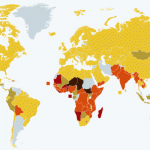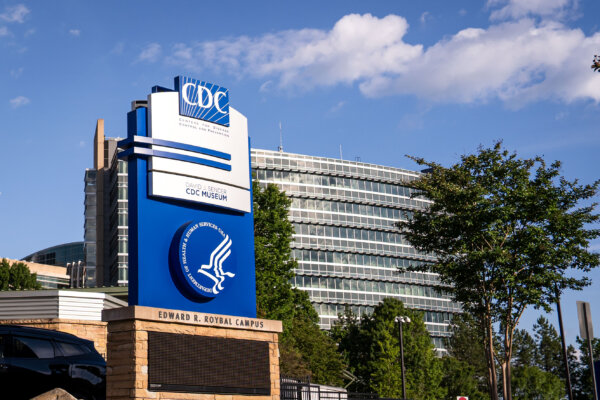![]() Pancreatic cancer is often referred to as “the king of carcinoma” due to the pancreas’s hidden location and the lack of noticeable symptoms, making early detection extremely difficult. In most cases, the cancer has already progressed to an advanced stage by the time it is diagnosed. Experts emphasize the importance of recognizing key symptoms to ensure timely medical care.
Pancreatic cancer is often referred to as “the king of carcinoma” due to the pancreas’s hidden location and the lack of noticeable symptoms, making early detection extremely difficult. In most cases, the cancer has already progressed to an advanced stage by the time it is diagnosed. Experts emphasize the importance of recognizing key symptoms to ensure timely medical care.
The pancreas is an organ located in the abdomen with two main functions: exocrine and endocrine. The exocrine function involves releasing pancreatic juice to aid in the digestion of proteins, carbohydrates, and fats. The endocrine function releases hormones into the bloodstream, including insulin to lower blood sugar and glucagon to raise it, thereby maintaining healthy blood sugar levels.
Common Symptoms
On the “Health 1+1” program, Dr. Tong Jing, a physician at Jing Gastroenterology & Hepatology and an assistant professor at NYU School of Medicine, discussed the common symptoms, risk factors, and treatment options for pancreatic cancer.
- Stomach pain and back pain: Pain associated with pancreatic cancer varies from person to person. Some patients experience persistent, dull pain in the upper abdomen, middle back, or upper back, possibly caused by a pancreatic tumor pressing against the spine. Others describe the pain as starting in the center of the abdomen and radiating to the back. The pain often worsens when lying down but eases when leaning forward. If older adults experience chronic abdominal pain that persists despite treatment for gastric issues, pancreatic disease should be considered.
- Jaundice: A pancreatic tumor can block the bile duct, preventing bile from flowing into the duodenum. This can lead to yellowing skin and eyes, dark urine, pale and greasy stools, and itchy skin.
- Unexplained weight loss: Pancreatic cancer often reduces or eliminates appetite, resulting in weight loss. If sudden weight loss occurs without intentional dieting, consulting a doctor to determine the cause is essential.
- Gastrointestinal problems: As a pancreatic tumor spreads, it can press against the stomach or other parts of the digestive system, causing loss of appetite, indigestion, nausea, vomiting, and abdominal bloating or swelling.
- Unexplained fatigue: Many patients with pancreatic cancer experience a persistent lack of energy. However, fatigue can also result from other causes, such as sleep disturbances or emotional stress.
- Diabetes: Pancreatic cancer can damage insulin-producing cells, leading to elevated blood sugar levels. Patients may experience frequent thirst, hunger, and urination. If a non-overweight, middle-aged person with no family history of diabetes suddenly develops high blood sugar, it may indicate a pancreatic tumor.
Risk Factors
Although pancreatic cancer is relatively uncommon, its mortality rate is very high, Jing noted. The following factors can increase the risk of developing the disease:
Smoking
Former U.S. President Jimmy Carter, who just turned 100 this year, has a family history of pancreatic cancer—his father, brother, and sister all passed away from the disease. Carter has said that while other members of his family smoked, he never did.
Cigarettes, cigars, and modern e-cigarettes all contain nicotine, which is carcinogenic, Jing said.
Obesity
Obesity increases the risk of pancreatic cancer and other gastrointestinal tumors. A larger waist circumference is associated with a higher risk of developing pancreatic cancer, Jing noted.
Diabetes
Obesity increases the risk of developing Type 2 diabetes, and the incidence of pancreatic cancer is higher among patients with Type 2 diabetes. A systematic review found that for patients with prediabetes or diabetes, every 0.56 mmol/L increase in fasting blood sugar raised the risk of pancreatic cancer by 14 percent.
Chronic Pancreatitis
Research has shown that alcohol consumption is a major risk factor for chronic pancreatitis, and people with chronic pancreatitis are at a higher risk of developing pancreatic cancer.
Long-Term Chemical Exposure
Prolonged exposure to chemicals containing carcinogens increases the risk of pancreatic cancer.
Aging
The risk of pancreatic cancer generally increases with age, with most cases occurring after the age of 50.
Gender
The incidence of pancreatic cancer is higher in men than in women. The lifetime risk of developing pancreatic cancer is one in 5Unexplained fatigue6 for men and one in 60 for women, according to the American Cancer Society.
Race
Research shows that pancreatic cancer occurs more frequently in black Americans than in white Americans and other racial groups, though the reasons for this remain unclear.
Dietary Habits
A meta-analysis found that regular consumption of processed meat was associated with an increased risk of pancreatic cancer. Red meat, processed foods, foods high in saturated fats, and sugary beverages may also contribute to the risk, although the evidence remains inconclusive, according to Jing. It is recommended to prioritize whole foods and reduce the intake of processed items like sausages, bacon, and fried foods.
Treatment Options
In terms of treatment, early-stage pancreatic cancer can be treated with surgery, but in most cases, the cancer has already spread by the time it is diagnosed.
- Stage 1—Early-stage cancer, where the tumor is confined to the pancreas
- Stage 2—The tumor begins to spread to nearby lymph nodes.
- Stage 3—Cancer has invaded or wrapped around surrounding blood vessels or the duodenum.
- Stage 4—Cancer has metastasized to distant organs, such as the liver, peritoneum, or stomach.
Stages 1 and 2 pancreatic cancers can be treated with surgery to remove the tumor. The Whipple procedure, the standard surgical treatment for pancreatic cancer, removes both benign and malignant tumors. However, it is highly invasive and causes significant trauma to other organs, as it involves extensive dissection and rearrangement of abdominal structures. It typically requires the removal of parts of the duodenum, gallbladder, and stomach, with the remaining organs needing to be rejoined.
The procedure is highly complex and demanding, often requiring surgeons to operate continuously for more than 10 hours. Moreover, the risk of postoperative complications is high.
In 2018, the Johns Hopkins School of Medicine had a groundbreaking case involving a patient named Lana Brandt, who had a family history of pancreatic cancer. After experiencing several episodes of pancreatitis, she was informed that she carried a gene that increased her risk of developing pancreatic cancer. To prevent the disease, doctors used a minimally invasive technique to remove her pancreas and spleen. They then isolated her islet cells and transplanted them into her liver, allowing them to continue producing insulin. Following the surgery, she no longer needed insulin injections.
For stage 3 and 4 pancreatic cancer, surgery is not initially an option. However, some patients may opt for a “sandwich therapy” approach, where radiation and chemotherapy are used to shrink the tumor, downstaging it to stage 2 and making surgery possible. After the tumor is removed, additional radiation and chemotherapy are administered to target any remaining cancer cells.
Jing shared the case of a 45-year-old patient, Ms. Liu, who was diagnosed with stage 2 pancreatic cancer that had progressed toward stage 3. She underwent sandwich therapy and is still alive eight years later.
Another patient, a man in his 50s, was diagnosed with stage 4 pancreatic cancer after the tumor had spread to his liver. Fortunately, only a single metastatic lesion was found. After chemotherapy and radiation, surgeons removed most of his pancreas and part of his liver, eliminating all visible tumors. He continued with chemotherapy and radiation post-surgery to target any remaining microscopic cancer cells. Five years later, he is still alive and enjoys a good quality of life.











